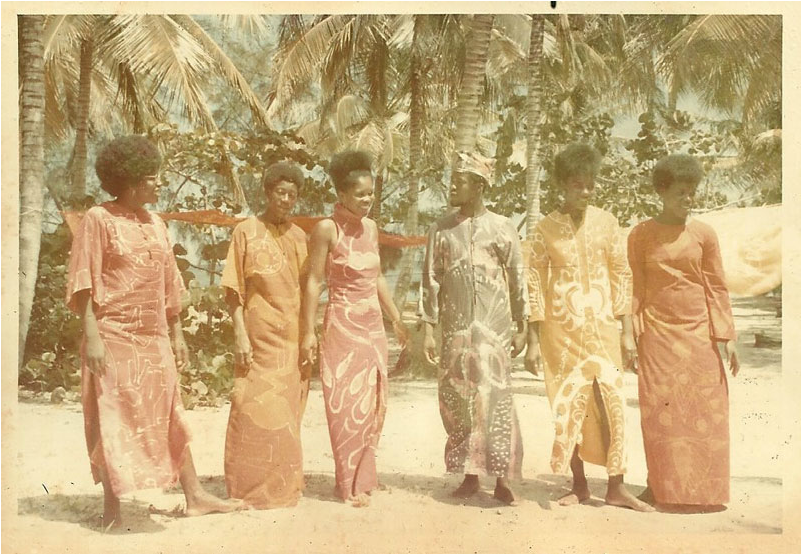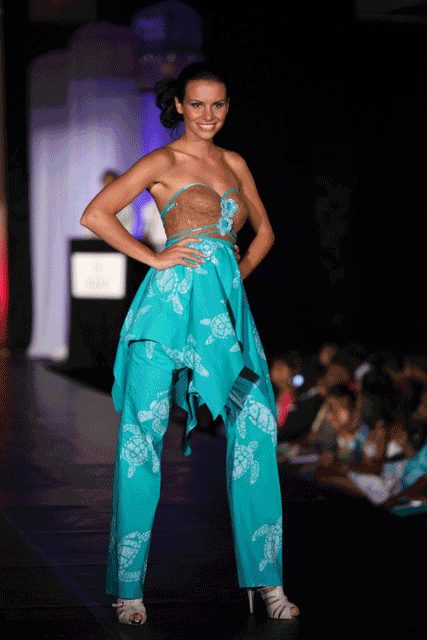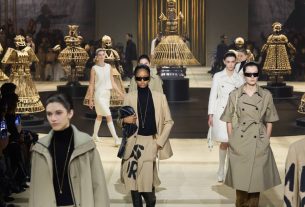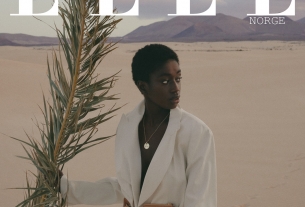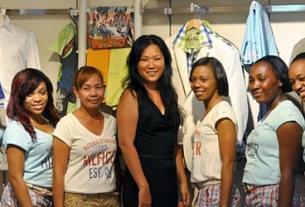Writer: Mia G
When we think of designer prints we may think of Gianni Versace, Ralph Lauren, Pierre Cardin, but the Bahamas also manufactures an authentic brand, produced in The Bahamas since 1973.
Enjoying the exotic beach life in the 1960’s, Rosie Birch – a Wisconsin native and community activist – set out on a mission to provide much-needed jobs for women living on the island of Andros. This was an initiative that was near and dear to her.
Sewing classes were provided and wax dying experiments carried out.
In 1973 Androsia Handmade Batik catapulted and soon became known as the unofficial, national fabric of the Bahamas.
At that time, a promising art student and recent high school graduate – Merton Thompson – was commissioned for the position of company designer.
Together, Merton Thompson and Rosie Birch designed the prototype for a rubber stamp. This prototype would succeed in streamlining the arduous task of batiking.
Androsia is an authentic Bahamian, hand dyed, cotton fabric, which was started on a beach in the early 1970’s and was boosted to a world-famous brand and national fabric of The Bahamas.
Produced and manufactured on the beautiful island of Andros, this fabric is considered a National Treasure and in 1998, won the Silver Jubilee Award.
The process of creating these textiles is pretty intricate. The organic shapes are inspired by natural resources surrounding the islands.
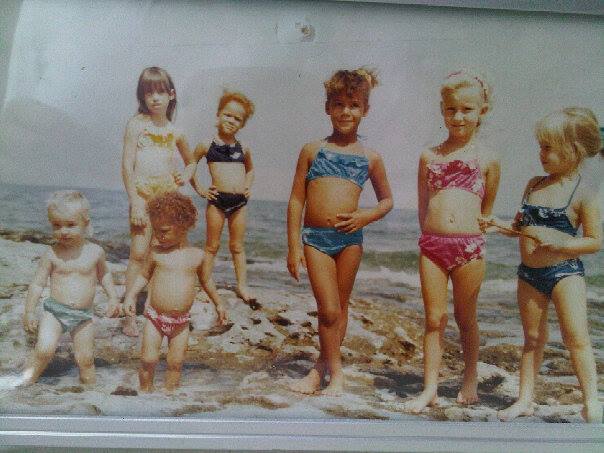
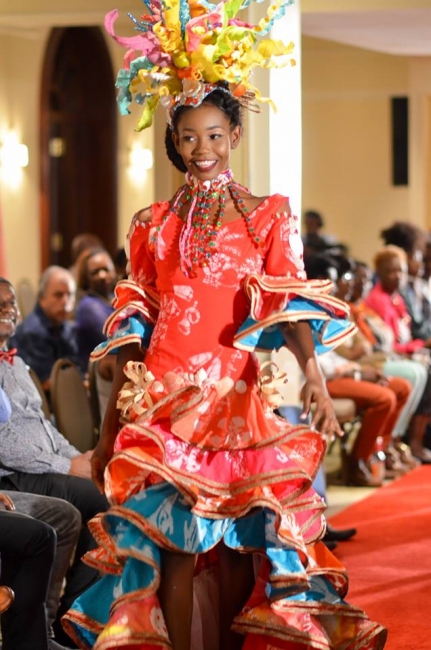
Shapes like conch shells, hibiscus flowers, and native coral heads adorn these cotton fabrics, accompanied by the notable Androsia signature stamped on every yard.
Stencils, created from locally harvested sponges and foam, fashioned into whimsical shapes, are dipped into heated wax and then hand pressed onto fabric. The fabric is then soaked in dye, just long enough for the color to be absorbed.
Androsia is known and loved for its vibrant colors. Wax is used to prevent the dye from adhering to the fabric. The fabric is then boiled to remove the wax and hung on a line to dry.
While some aspects have been refined and developed, the current process is similar and some of the original designs, conceived by Rosi Birch, are still utilized.
This generous soul, Rosi, certainly believed in generational wealth. The business has been passed on from Rosi to her step-son Jeff, to his daughter Casey, whose infant footprint was also used in a design for the brand.
Androsia has been used in the production of home decor, Jewelry, Accessories and fashion wear like Shirts, dresses, pareos, tanks and swimwear.
Although the main colors used are pink and purple, these prints are not limited to any gender and are proudly worn and enjoyed by men and women all around the world.
The Androsia brand offers a complete line of women’s, men’s, and children’s batik clothing, resort and cruise wear, accessories, home goods, and batik fabric sold by the yard.
In the 1990s, the government of the Bahamas outfitted its Olympic athletes and other traveling delegates in the award winning textile.
The Androsia Factory – where Androsia fabric is manufactured – is located near the Andros Lighthouse and has been in business since 1973.
Batik lessons are offered, and visitors are allowed to tour the facilities, watch the artisans at work , cut and dye fabrics, and make a two-yard piece of batik to take home.
On the local runways in the Bahamas, you can find some of the most beautiful gowns and accessories fashioned from this widely used Androsia fabric.
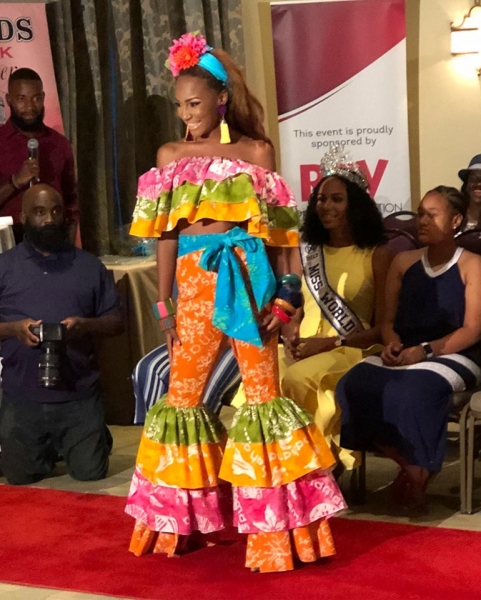
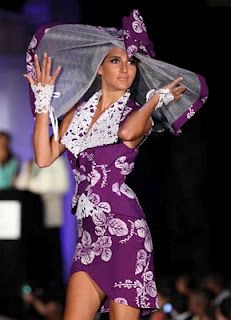
These prints are used in the construction of designer gowns and costumes on pageant runways, locally and internationally.
In early 2011, a replica of the authentic Androsia Batik was introduced into one of the local Fabric stores.
This was seen as a betrayal of Bahamian Culture by the Androsia Founder, who expressed her outrage when first viewing the closely-resembling fabrics. It is produced outside of the Bahamas and sold locally. This new Batik fabric can be identified by the exclusion of the authentic Androsia signature.
Initially setting out to provide much needed jobs to those on the Island, Birch accomplished her goal and was able to successfully employ many local women throughout the years.
